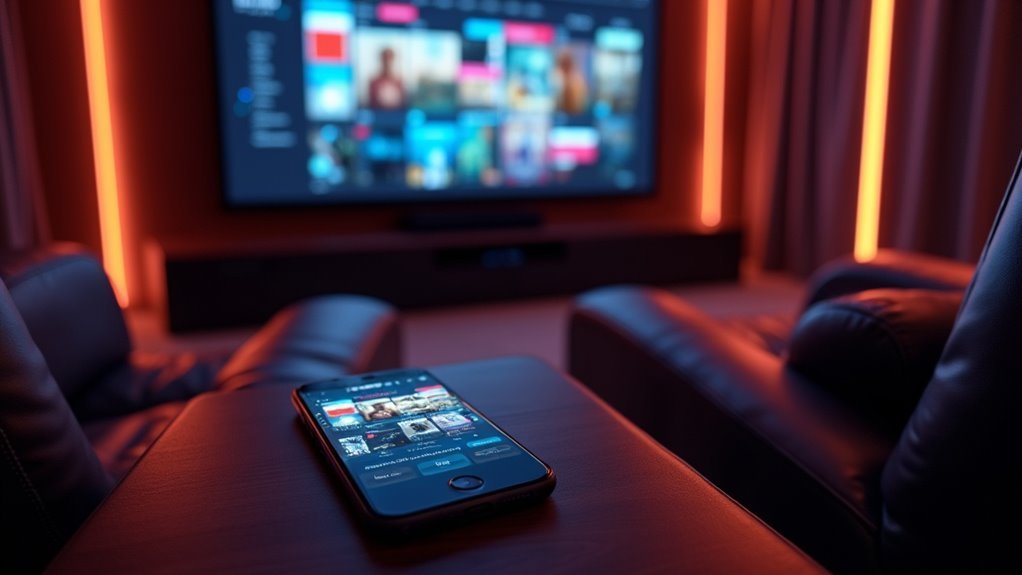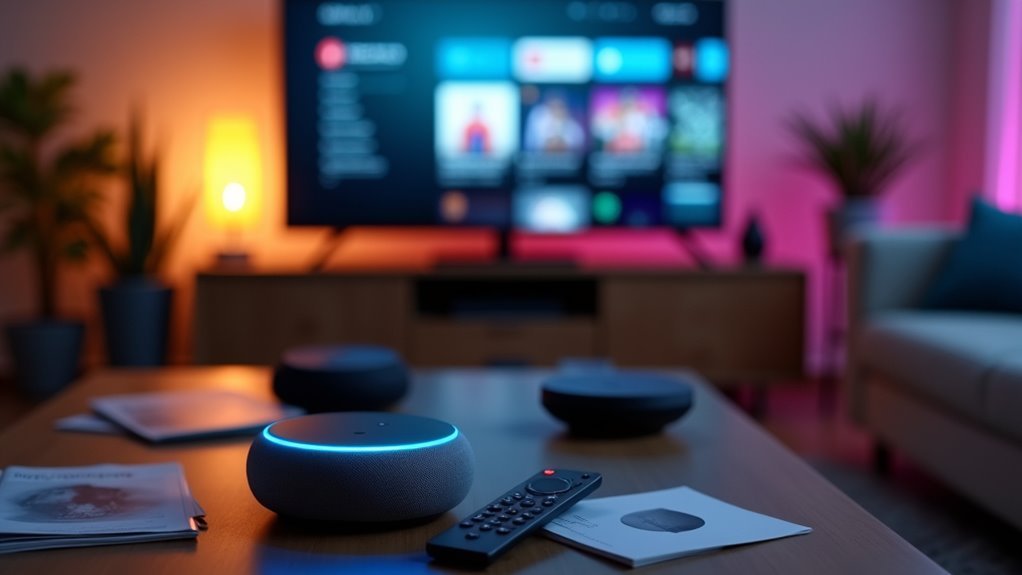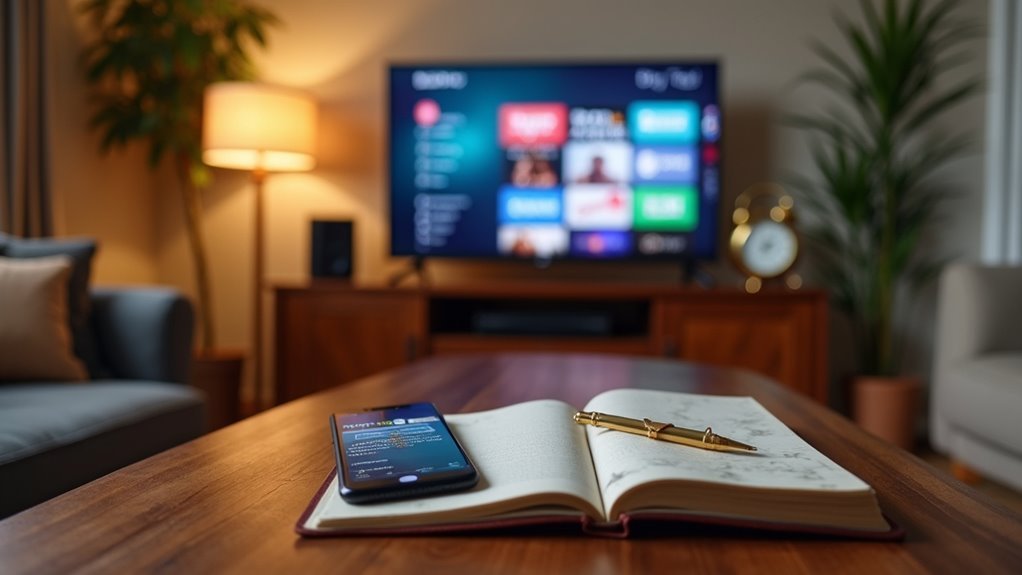You’ve probably experienced that frustrating moment when you’re ready to unwind with a movie, but you’re stuck fiddling with remotes, adjusting lights, and waiting for your sound system to connect. Your home entertainment setup should work for you, not against you. Smart scheduling techniques can transform these chaotic moments into seamless changes, but most people don’t know where to start with automation that actually makes sense for their lifestyle.
Setting Up Automated Calendar Integration for Your Home Theater System

When you integrate your home theater system with smart calendar applications like Google Calendar or Apple Calendar, you’ll transform how you plan and enjoy your entertainment experiences.
This automated calendar integration enables seamless scheduling of movie nights and streaming sessions without manual setup each time.
Platforms like IFTTT and Zapier create powerful automation recipes that trigger your equipment based on calendar events. Your projector powers on, lights dim, and your AV receiver adjusts settings automatically when scheduled viewing time arrives.
Automation platforms seamlessly transform calendar events into complete home theater experiences with zero manual intervention required.
Voice assistants like Amazon Alexa or Google Assistant sync with your calendar, letting you manage your home theater schedule through simple voice commands.
Your smart home hub’s scheduling feature optimizes device readiness before viewing times, ensuring everything’s prepared when you’re ready to relax and enjoy your entertainment.
Programming Smart Lighting and Audio Presets for Different Entertainment Modes
Why settle for manually adjusting every light and speaker when you can create custom presets that instantly transform your space for any entertainment activity?
Programming smart lighting to adjust brightness and color temperature enhances your viewing experience by creating perfect ambiance for movie nights or gaming sessions. Configure audio presets on your AV receiver to automatically enhance sound settings for different content types, ensuring ideal audio performance for each entertainment mode.
Integrate automated scenes like “Movie Mode” that simultaneously dim lights, lower shades, and power on your home theater system with a single voice control command, creating a seamless shift.
Establish scheduling for these presets to activate automatically at designated times, making your entertainment routine effortless and convenient.
Creating Voice-Activated Scheduling Commands for Seamless Media Sessions

Voice commands take your automated entertainment presets to the next level by eliminating the need to remember specific app controls or physical remotes.
Voice commands eliminate the hassle of juggling multiple remotes and memorizing countless app controls for effortless entertainment.
Voice-activated scheduling transforms your smart home systems into an intuitive entertainment hub where media sessions begin effortlessly.
Create seamless experiences with these voice-activated commands:
- “Schedule movie night every Friday at 7 PM” – Never forget your weekly entertainment ritual
- “Set movie mode” – Instantly adjust lighting and audiovisual settings with one phrase
- “Remind me to watch [Movie Title] on [Release Date]” – Stay current with new releases
- “Start movie night” – Activate custom routines that control multiple devices simultaneously
- “Update my viewing preferences” – Refine commands based on your habits for ideal convenience
Regular adjustments to your voice commands guarantee your home entertainment system evolves with your preferences.
Frequently Asked Questions
What Is the Golden Rule for Home Theater?
You’ll achieve ideal home theater design by maintaining room dimension ratios between 1:1.6 and 1:2.4, placing speakers at ear height equidistant from seating, and positioning your screen 24″ to 36″ above floor level.
What Do I Need for a Home Theatre Setup?
You’ll need a display screen like a large TV or projector, audio system with surround sound, comfortable seating, proper room acoustics, and media devices connected through a quality AV receiver.
What Is the Best Home Theater Configuration?
You’ll want a 7.1 surround sound system in a rectangular room with proper speaker placement, screen at eye level, strategic lighting controls, and tiered seating with risers for ideal viewing angles.
How to Set up a Mini Theatre at Home?
You’ll need a room with 1:1.6 to 1:2.4 dimensions, install a 5.1 surround system, add acoustic panels, choose appropriate screen size for seating distance, and incorporate dimmable lighting with blackout curtains.





Leave a Reply